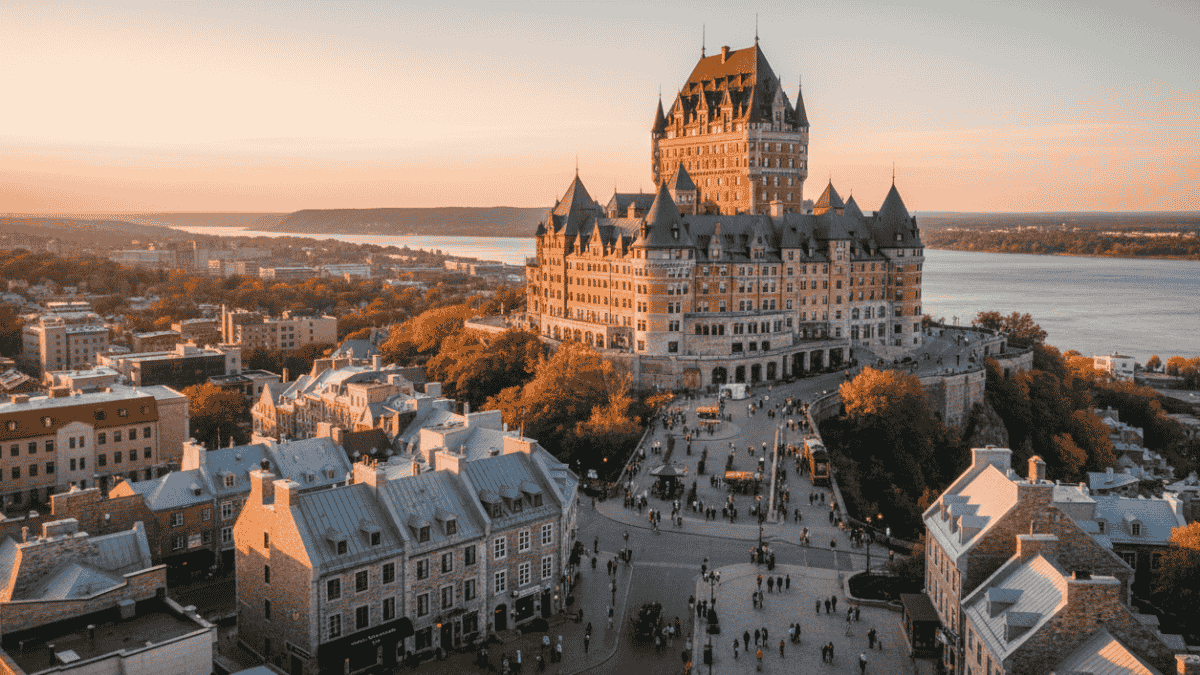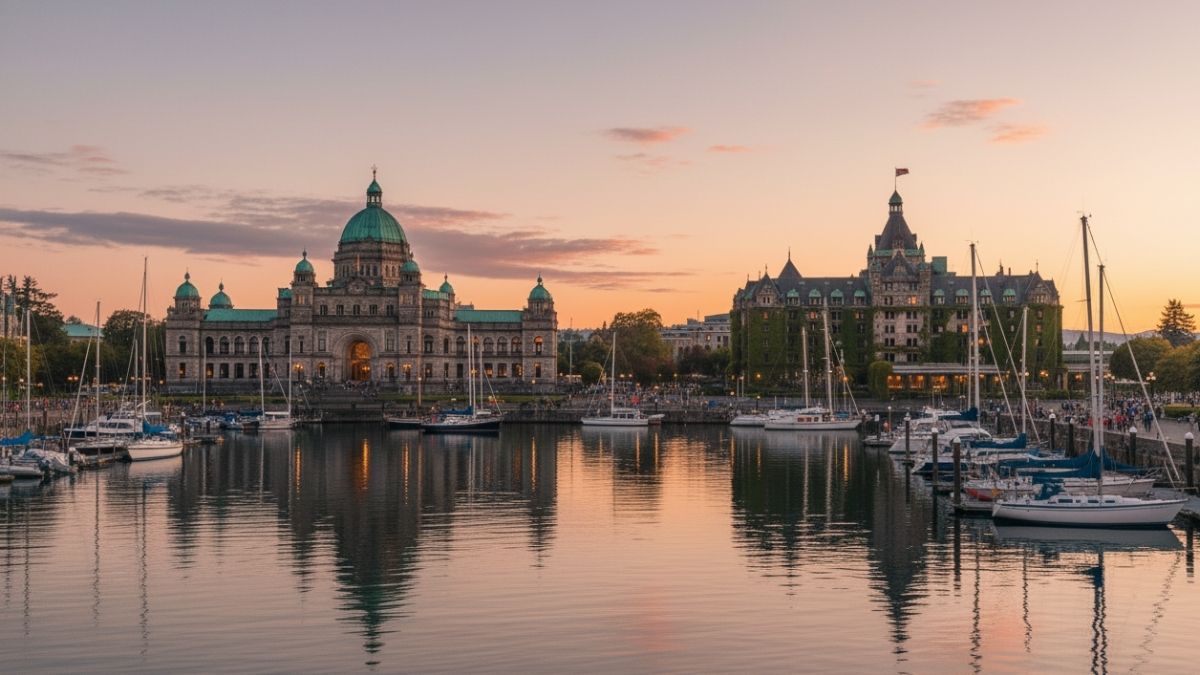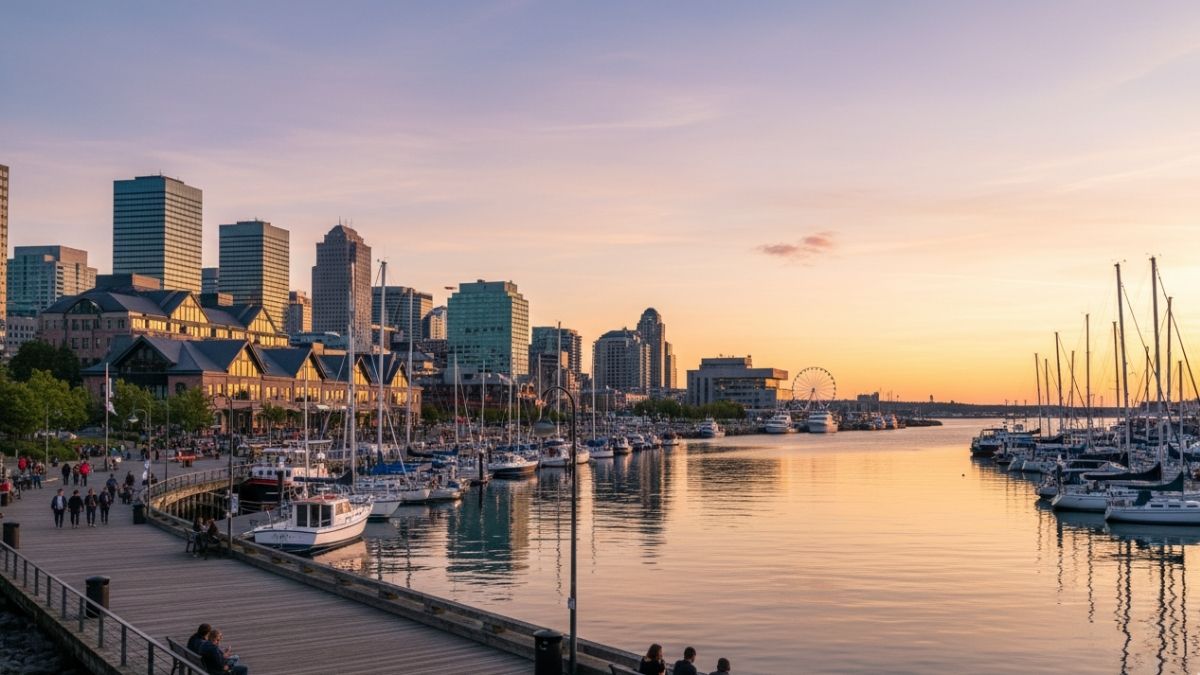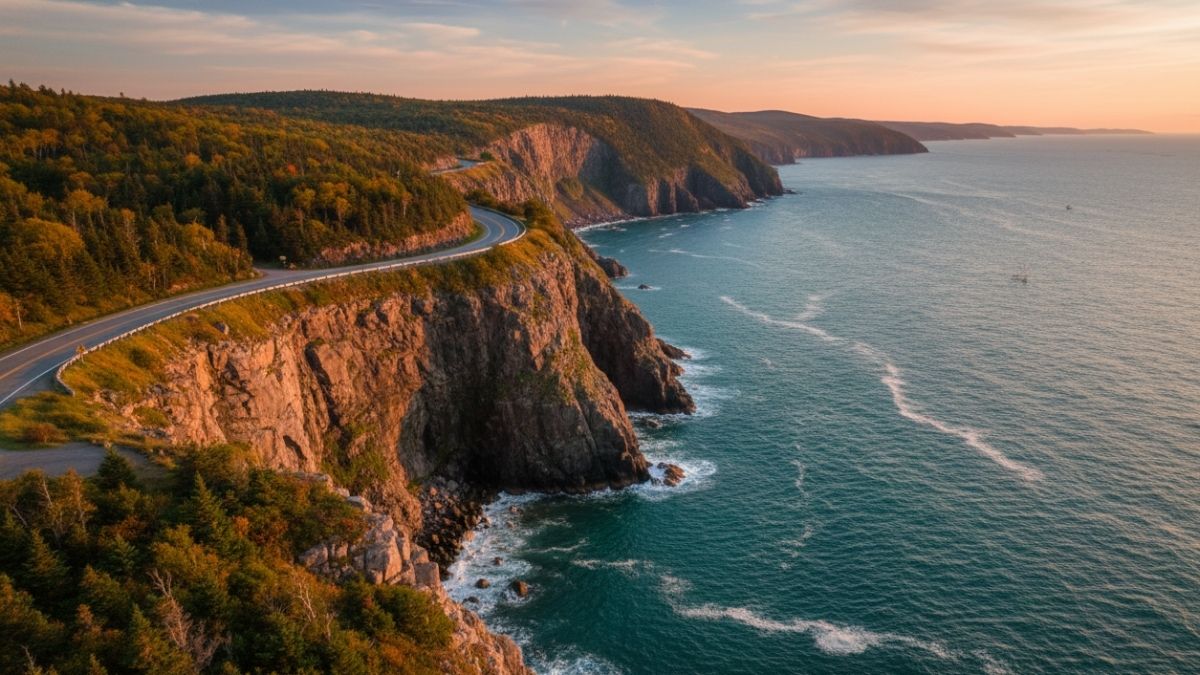Toronto — Canada’s largest city and one of the most multicultural hubs on Earth. Whether you’re coming here for the skyline views from the CN Tower, the creative buzz of Queen West, or the food markets that awaken your senses, Toronto is a destination that refuses to stand still. It’s vibrant, layered, and full of surprises waiting around every corner.
From cobblestone alleys to modern glass towers, this city manages to balance old-world charm with cutting-edge innovation. You’ll hear over 160 languages spoken here, taste cuisines from five continents in a single day, and feel an energy that’s distinctly, unapologetically Toronto.
Let’s explore everything that makes this city so magnetic — from when to visit and where to stay, to must-see attractions and hidden gems that will make your trip unforgettable.
If you’d love the complete Toronto experience — with detailed itineraries, neighborhood maps, packing lists, and insider travel tips — grab your FREE Toronto Travel Guide eBook today.
If you prefer something to flip through on your flight or hotel nightstand, you can also order the paperback edition on Amazon or Lulu Bookstore.
Simply enter your name and email below to get instant access to your free download.
Planning your city adventure just got easier with WorldTourGuide — and while you’re at it, don’t miss our Traveler’s Toolkit, trusted by explorers worldwide to plan smarter, pack lighter, and travel better.
For official city tourist information, check out the City of Toronto visitor guide.
Geography & Historical Landmarks
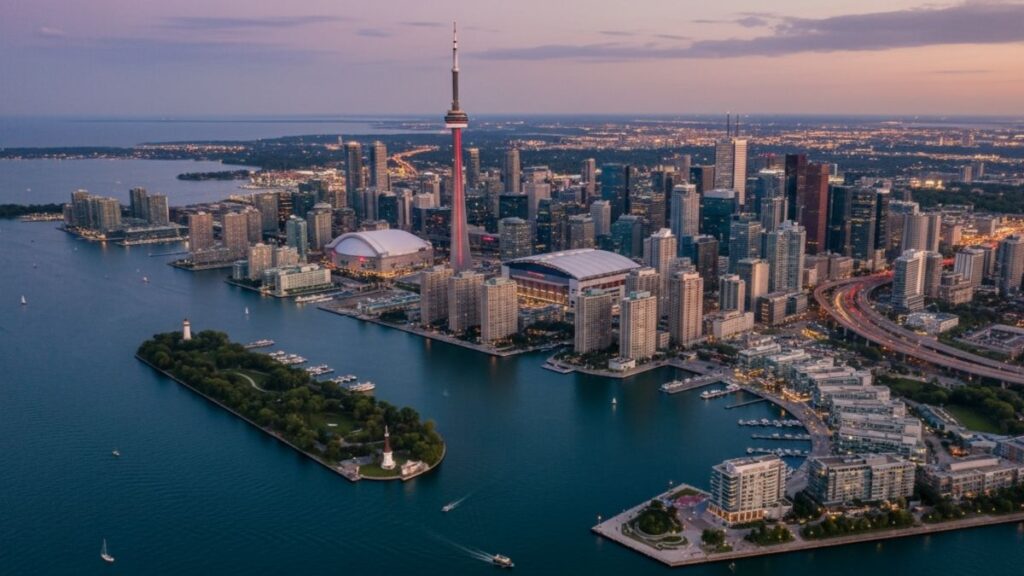
Toronto sits along the northwestern shore of Lake Ontario, one of the Great Lakes, and its geography shapes how people live, move, and breathe. The lakefront hums with activity — joggers at sunrise, families biking the trails, and locals gathering for golden-hour views. The city rises gradually from the water toward midtown, framed by leafy ravines like the Don Valley and Humber River, where nature weaves through the concrete jungle.
History runs deep here. Long before skyscrapers and streetcars, this land was home to the Anishinaabe, Haudenosaunee, and Wendat peoples. The very word Toronto comes from a Mohawk term meaning “where there are trees standing in the water.” Their presence is still honored in the city’s public art, ceremonies, and cultural festivals.
If you love landmarks that tell stories, Toronto won’t disappoint. Start at Fort York, built in 1793 to defend the city during the War of 1812. Step through its original wooden gates and picture soldiers pacing the ramparts. Then wander to St. Lawrence Market, a bustling public market since the 1800s, where bakers, butchers, and cheesemongers carry on generations of tradition.
A few blocks north stands Old City Hall, its clock tower an icon from Toronto’s early boom era, now sitting beside the futuristic twin towers of the New City Hall — a striking symbol of how old and new coexist here.
And then, of course, there’s the CN Tower, piercing the clouds since 1976. Once the tallest freestanding structure in the world, it still dominates the skyline. From the observation deck, you can see how vast and vibrant Toronto truly is — from its waterfront islands to its sprawling neighborhoods.
For the brave, there’s EdgeWalk: a hands-free stroll around the tower’s rim, 356 meters above ground. It’s equal parts terrifying and unforgettable.
When to Visit: Best Seasons & Events
Toronto isn’t a one-season city — it transforms beautifully throughout the year.
Spring (March to May) brings color and energy back to the city. The cherry blossoms in High Park burst into pink clouds, patios reopen, and locals shake off winter blues. It’s also a great time for lower hotel prices and fewer crowds.
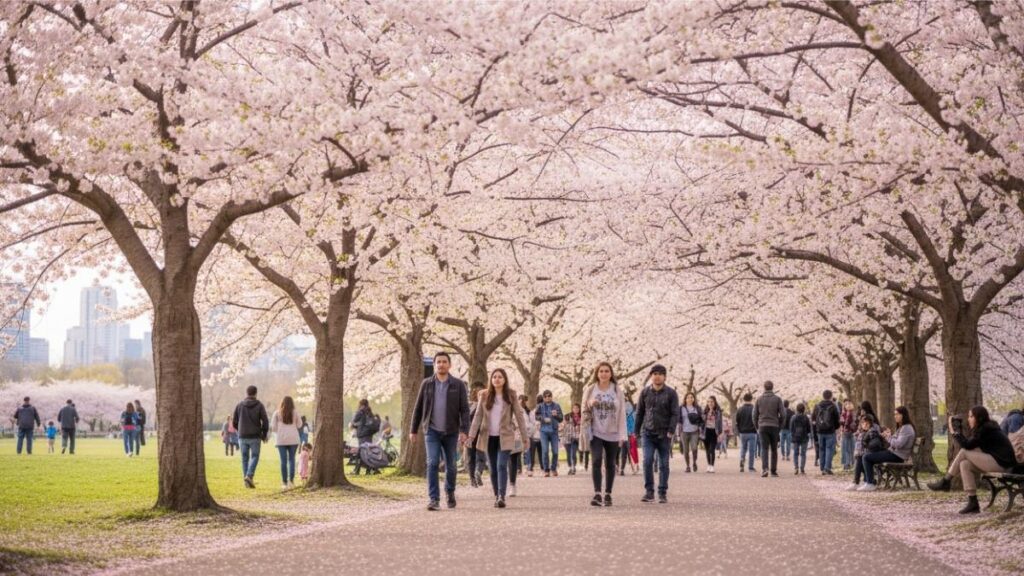
Summer (June to August) is when Toronto truly shines. Warm temperatures, endless festivals, and long, golden evenings make it irresistible.
Highlights include:
- Pride Toronto — one of the world’s largest LGBTQ+ celebrations.
- Toronto Caribbean Carnival (Caribana) — a high-energy street parade filled with music, color, and dance.
- Toronto International Jazz Festival and Taste of the Danforth, bringing sound and flavor to the streets.
Fall (September to November) is the city at its most photogenic. The trees blaze red and gold, the weather stays mild, and major events like the Toronto International Film Festival (TIFF) draw global crowds. If you’re a culture lover, this is your sweet spot — fewer tourists, lower prices, and endless things to do.
Winter (December to February) turns Toronto into a glittering wonderland. Yes, it’s cold, but the holiday markets, light festivals, and skating rinks make it magical. Nathan Phillips Square transforms into a postcard-perfect rink beneath the glowing “Toronto” sign, while the Distillery Winter Village offers artisan gifts, mulled wine, and festive spirit.
Whatever the season, Toronto always has something worth discovering — the trick is deciding which version of the city you want to meet.
How to Get There: Flights, Trains & Roads
Getting to Toronto is easy — the city is one of North America’s best-connected travel hubs.
By Air:
Most visitors arrive via Toronto Pearson International Airport (YYZ), located about 25 minutes from downtown. You can hop on the UP Express train from Pearson to Union Station — a 25-minute ride that drops you right into the city’s core. Taxis and rideshares cost around $50–$70 CAD depending on traffic.
If you prefer to land closer to the action, Billy Bishop Toronto City Airport (YTZ) sits on a small island near downtown. It’s mostly used by Porter Airlines for domestic and short U.S. routes. You can walk through a pedestrian tunnel or take a 2-minute ferry into the city — it doesn’t get more convenient than that.
By Train:
Toronto’s Union Station is a masterpiece of architecture and the main hub for VIA Rail (Canada’s national train service). It connects the city to Montreal, Ottawa, and even New York City via Amtrak’s Maple Leaf line.
By Car:
Toronto is easily accessible via major highways like the 401, QEW, and 400. From Niagara Falls, it’s just 1.5 hours. From Montreal, around 5.5 hours. Be mindful of rush-hour traffic and high parking costs downtown. If you’re driving, consider booking accommodations with parking included.
Use Destination Ontario’s Toronto page to find accommodation, things to do, and local transit tips.
N.B.: If you organize your trip early and pack smart using our recommended travel gear essentials and trusted travel partners below, you’ll skip the “I wish I knew” stress. From booking flights to finding the best travel deals, these are the gears that make every journey smoother — and save you money while you’re at it.
Top Attractions & Things to Do
There’s no shortage of things to do in Toronto — the city is a playground of culture, creativity, and adventure.
1. CN Tower & Waterfront
No Toronto trip is complete without a visit to the CN Tower. Ride the glass elevator, step onto the glass floor, or dine at the revolving 360 Restaurant with panoramic views. Afterward, stroll down to the Waterfront, a breezy stretch lined with trails, cafes, and art spaces. Catch a ferry to the Toronto Islands for skyline photos, beaches, and peaceful picnic spots.
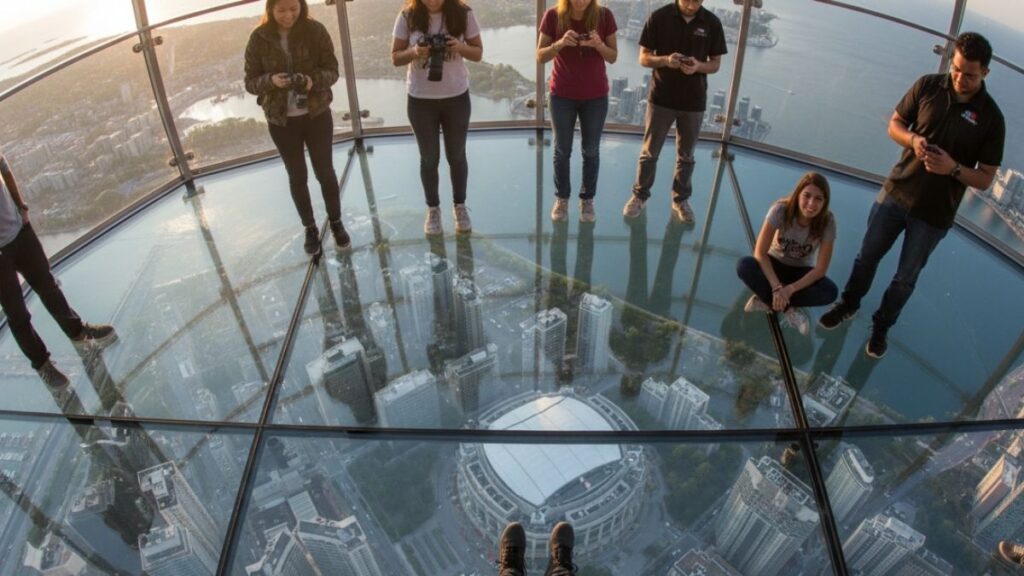
2. Royal Ontario Museum (ROM)
A blend of ancient history and futuristic design, the ROM is Canada’s largest museum. Explore dinosaur fossils, Egyptian mummies, Indigenous art, and rotating exhibitions that span the world. Don’t miss the striking “Crystal” façade — a modern marvel attached to a century-old building.
3. Casa Loma
Toronto’s castle on a hill, built by dreamer Sir Henry Pellatt in 1914. Its secret tunnels, grand ballrooms, and Gothic towers make it a favorite for movie shoots and weddings. The view from the towers is pure magic.
4. Distillery District
A cobblestone neighborhood filled with art galleries, cafes, and boutique shops housed in 19th-century whisky distillery buildings. It’s especially charming during the holidays.
5. Kensington Market & Queen West
If you love creativity and culture, these neighborhoods are must-visits. Kensington Market bursts with street art, vintage stores, and multicultural eats. Queen West offers indie boutiques, live music, and some of the best street murals in Canada.
6. Ripley’s Aquarium of Canada
Located beside the CN Tower, this family favorite features an underwater tunnel where sharks and rays glide overhead — an unforgettable experience for all ages.
Explore more of Toronto’s cultural gems on the Destination Toronto official site.
Best Areas to Stay
Toronto’s neighborhoods are like personalities — each with its own charm.
- Downtown (Entertainment District, Financial District): Perfect for first-time visitors. You’re close to everything, but prices are higher.
- The Annex: Leafy, youthful, and full of character — near the University of Toronto.
- Yorkville: Chic and elegant, ideal for luxury travelers and shoppers.
- Queen West: Hip, artsy, and full of local flavor.
- Waterfront: Peaceful and scenic, perfect for relaxation and views.
- Distillery District / Corktown: Great for couples and history lovers.
- Midtown (Yonge & Eglinton): More local and family-friendly, with good subway access.
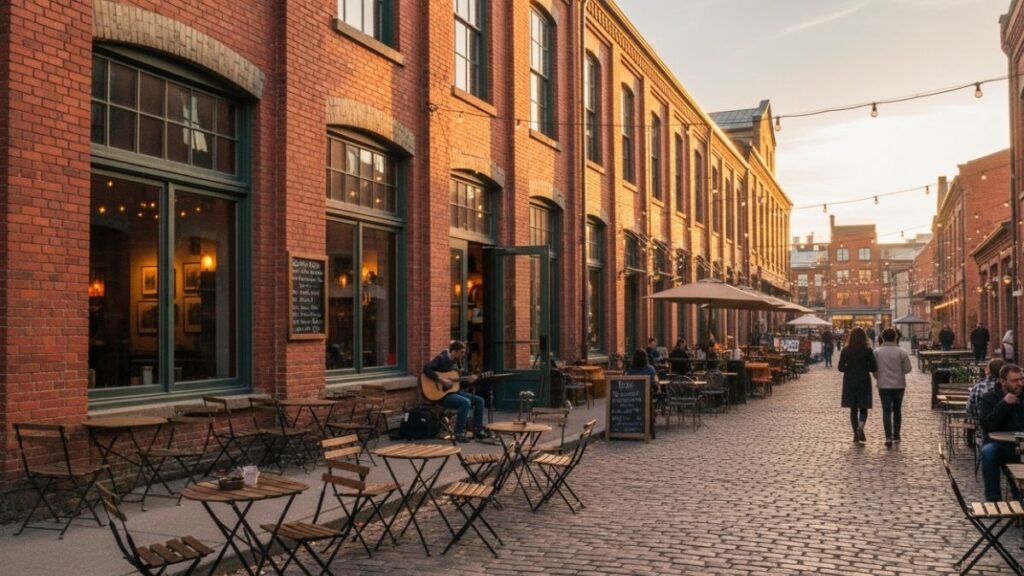
Laws & Local Etiquette
Canada is famously polite, and Toronto keeps that reputation strong. Still, it helps to know a few basics:
- The legal drinking age is 19.
- You can only drink alcohol in licensed areas.
- Cannabis is legal but only in private or designated areas — not in parks or near schools.
- Smoking and vaping are banned indoors and near building entrances.
- Tipping is expected (15–20% in restaurants, 10–15% for taxis).
- Jaywalking is technically illegal — cross at crosswalks.
And one rule you’ll pick up quickly: say “sorry” often, even when it’s not your fault.
Safety & Awareness Tips
Toronto is one of North America’s safest big cities, but staying alert is smart anywhere you go:
- Keep valuables close, especially in crowded areas.
- Trust your instincts — if something feels off, walk away.
- Never leave your drink unattended when you’re in a bar or club.
- Stick to well-lit areas at night, and use taxis or rideshares when traveling late.
- Save emergency numbers (911 for emergencies, 311 for city services).
Blend in, be kind, and you’ll fit right in with the locals.
Tipping, Taxes & Payments
Prices in Toronto don’t include tax — expect around 13% added at checkout. Most places take cards, and contactless “tap” payments are the norm. Cash is optional but useful for tipping or small purchases.
Quick guide:
- Restaurants: 15–20%
- Bars: $1–2 per drink
- Taxis: 10–15%
- Hotels: Tip housekeeping $2–5 per night
Before you close this guide, here’s something exciting you shouldn’t miss! Our travel media agency, WorldTourGuide, has officially launched a Sponsored Trip Program — a one-of-a-kind opportunity for our most loyal readers and travelers to win an all-expenses-paid trip to their dream destination.
Imagine standing atop the CN Tower, gazing over the city you love — all thanks to a journey that began here with us.
Toronto is waiting — let’s make your journey unforgettable.
Click below to learn how it works and how you can be part of this purpose-driven travel experience.
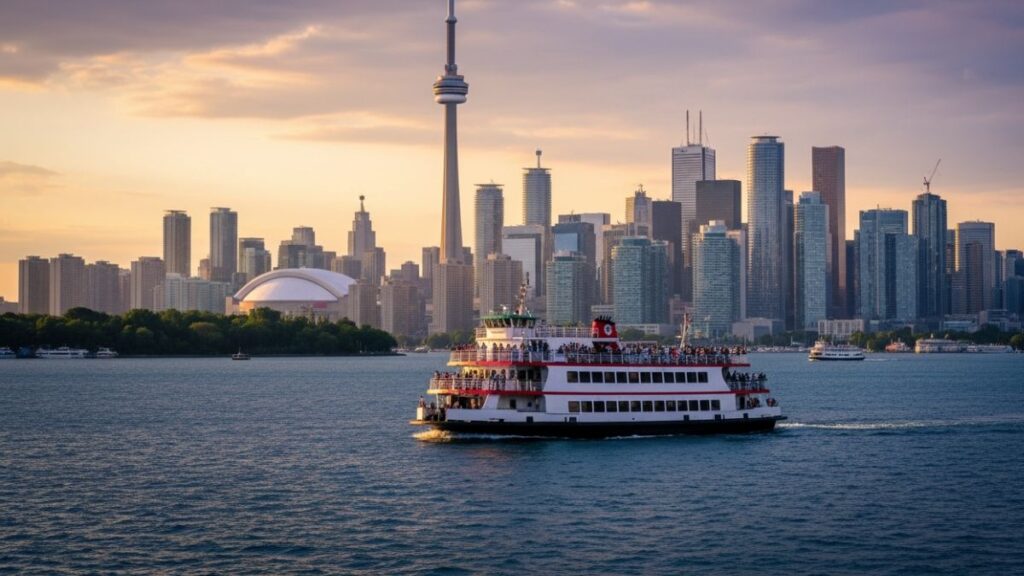
And that brings our Toronto Travel Guide to a close!
I’m wishing you safe travels, warm encounters, and unforgettable moments as you explore this incredible city — from its glass towers and green parks to its diverse flavors and timeless stories.
📘 Don’t forget your FREE Toronto Travel Guide eBook — if you missed it earlier, simply enter your name and email below to get instant access.
You’ll also receive updates, insider travel tips, and exclusive offers from WorldTourGuide to help you plan smarter, explore deeper, and travel better.


